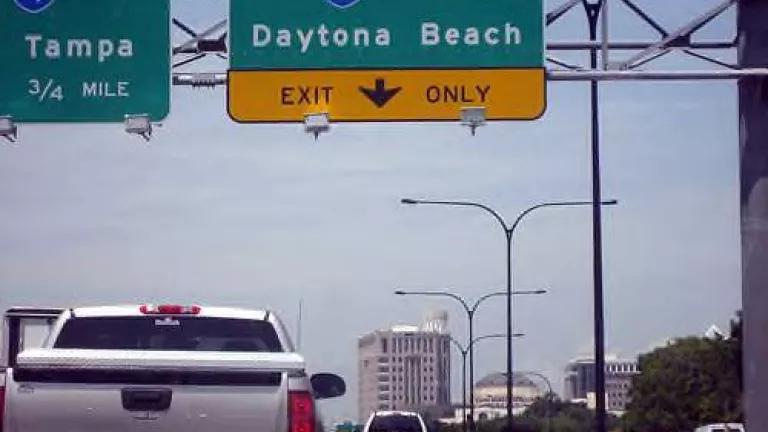
Last week the House, spurred in part by a highly motivated Freshman class, rejected a Democratic Caucus proposal to boost investment in transportation next fiscal year by almost 40 percent and instead proposed chopping more than 20 percent off the federal transportation program. This cut is deep, and stands in stark contrast with the President’s proposal as well as recommendations of bipartisan study commissions such as this one and this one.
Cutting the transportation program by billions a year may make for a great sound bite. But what exactly are the costs of slashing the federal transportation budget, on the ground? There’s far more at stake than new-fangled high-speed rail projects – what about fixing failing bridges? Helping suburban commuters? And giving people another way to get around when gas prices climb to $4 a gallon, or higher?
In a series of posts, I’ll be exploring how federal transportation budget cuts will visibly affect Freshman Congressional Districts.
Today I’m starting with a look at Florida’s 8th district – the Orlando area – represented by newly-elected Republican Daniel Webster. Since 2000, the district’s population has grown nearly 20 percent, mostly in the urban Orlando area and surrounding suburbs.
To help accommodate the population boom, the Florida Department of Transportation proposed a new commuter railway for Central Florida, known as SunRail. The project’s first phase would run south from Volusia County about 30 miles to downtown Orlando. The trains would run on existing track parallel to Interstate 4, the area’s major north-south artery, which is scheduled for reconstruction, providing a viable alternative for thousands of people to get to work.
Service was scheduled to begin in 2013, with a projected 4,300 riders each weekday in the first year, and 7,400 by 2030. Half of the project’s proposed $357 million cost would have been footed by the federal government, as part of the New Starts program.
The proposed House budget for 2012 passed last Friday could spell the end of this traffic-easing solution for Webster’s constituents. Governor Rick Scott is also reviewing state funding for the project, which was supposed to cover another 25 percent of its costs. All of which could leave Orlando-area commuters no choice but to continue to sit in traffic on I-4, idling away $4-a-gallon (or more) gas.
Even more foolish, however, would be further delaying necessary repairs on the Campo Way Bridge in Orange County, which carries about 250 cars a day. It was built in 1961 and has been classified as “structurally deficient” by the Federal Highway Administration. Federal funding could help pay for its maintenance and repair, especially if guided by a strong “fix it first” program that NRDC and other groups have recommended. Again, with the drastic budget cuts being pushed by the House, getting funding for necessary repair work becomes even more difficult.
So there you have it: repair work on the structurally deficient Campo Way Bridge in Orange County, and the launch of commuter rail service for Orlando. Two much-needed transportation projects in a Freshman congressional district at risk if the House budget proposal gets enacted.
And that’s just the beginning.
